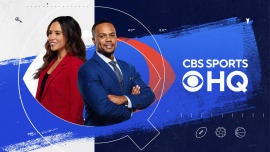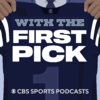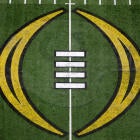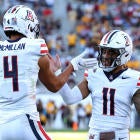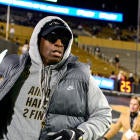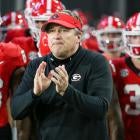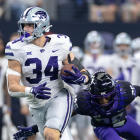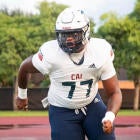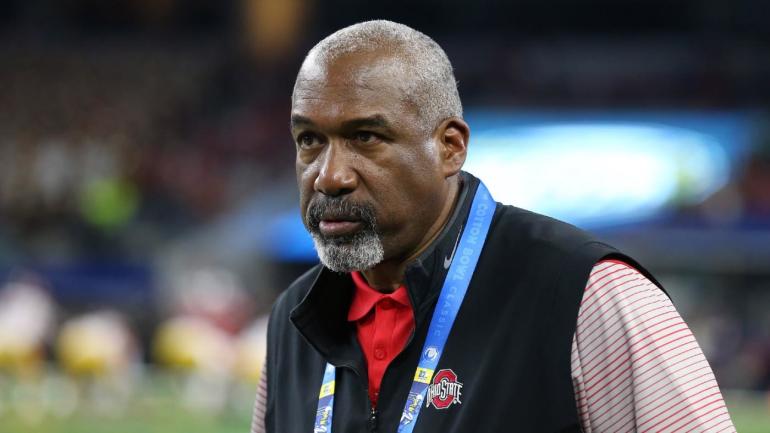
With the one-year anniversary of name, image and likeness coming Friday, one of its key influencers has a key suggestion: It might be time to allow schools to become involved with helping athletes arrange NIL deals.
"NIL is working largely in a whole lot of places," Ohio State athletic director Gene Smith told CBS Sports. "Of course, no one writes about those. Everybody's reporting on the plane crashing. I understand that, but the reality is we need to come up with a strategy to deal with inducements.
"One of those [solutions] might be institutions having more involvement. That's being discussed, and it needs to be continued to be discussed."
Even though the NCAA's bare-bones interim policy, adopted at the onset of NIL, didn't provide much guidance, it stated "the expectation" is that schools and athletes will not use NIL to compensate for athletic participation. The NCAA also warned about the dangers of an "improper inducement" if the two parties worked together.
Some of that language seems laughable now that NIL has evolved. The combination of NIL and the one-time transfer policy has turned some players into athletic mercenaries auctioning themselves off to the highest bidder.
One high-profile coach told CBS Sports during the NCAA Tournament that recruits routinely begin conversations with, "How much can I get [in NIL benefits]?"
Several states now allow coaches and athletic administration officials to assist in NIL deals. State NIL laws largely supersede NCAA policy, which has led to what some call a competitive advantage as some state laws don't allow school involvement on NIL deals.
Criticizing the unregulated marketplace, Smith and Ohio State football coach Ryan Day recently told Columbus, Ohio, business leaders it would take $13 million to keep the Buckeyes roster intact in this NIL era.
"That's another reason why it should be beneficial for schools to have engagement," Smith told CBS Sports.
Schools are allowed to inform prospects of financial possibilities, but they aren't allowed to use them as inducements. That's where the finest of lines is drawn. Before and during the NIL era, inducements -- a fancy way of saying tampering -- are hard to prove.
Smith is one of the most powerful figures in college sports. Not only does he oversee the second-largest athletic budget in the country, he served as co-chair -- alongside Big East commissioner Val Ackerman -- of a working group that labored for two years while trying to form NIL policy.
Members of that working group expressed to CBS Sports that their extensive recommendations were largely ignored by the NCAA when NIL laws went into effect on July 1, 2021. No document has ever been released on that working group's results. The NCAA interim NIL policy, as it was known at the time, still exists today with the association slow to move as it remains hamstrung by potential legal liability.
"That was originally discussed by the original working group that Val and I chaired," Smith said. "We walked away from that but maybe now with the lessons we learned from the last year, schools need to have more involvement."
If "across the board" schools were allowed to work more closely with players, Smith believes that might mitigate problems with inducements and tampering.
The NCAA policy has since been updated with further "guidance" that the association released on May 9. The goal is to crack down on NIL improprieties.
Specifically, the guidance defines as a booster any third-party entity that promotes an athletics program, assists with recruiting or assists with providing benefits to recruits, enrolled student-athletes or their family members. The definition could include "collectives" set up to funnel name, image and likeness deals to prospective student-athletes or enrolled student-athletes who might be considering transferring. NCAA recruiting rules preclude boosters from recruiting and/or providing benefits to prospective student-athletes.
Still, there is no firm structure on how to handle or potentially regulate NIL.
To date, it is known only that Miami mega-booster John Ruiz has been interviewed by the NCAA as it begins its NIL inquiries.
Smith wondered out loud whether, at some point in the future, NIL benefits could be factored into scholarship offers along with room, board, books, fees, cost of attendance, etc.
While NIL critics continue to gripe that there should be "guardrails" to limit benefits, the sport hasn't jumped the tracks. In fact, any attempt to cap NIL compensation might be met with an antitrust lawsuit. That's how we got to this point in the first place.
It was almost encouraging when Day told those Columbus business leaders that top quarterbacks are getting $2 million in NIL deals while edge rushers and offensive tackles can expect $1 million. That would suggest market prices are forming around NIL.
Ohio State quarterback C.J. Stroud made headlines recently by agreeing to an NIL deal with a local audio dealer that resulted in him receiving a Bentley lease. Earlier this month, OSU announced its athletes had signed more than 900 NIL contracts.
"We have some student-athletes who are doing exceptionally well, seven-figure deals," Smith said. "We have Olympic sports student-athletes with major six-figure deals. That doesn't dishearten me. It's a matter of how you make it happen. … Student-athletes are creative if you let them be."


